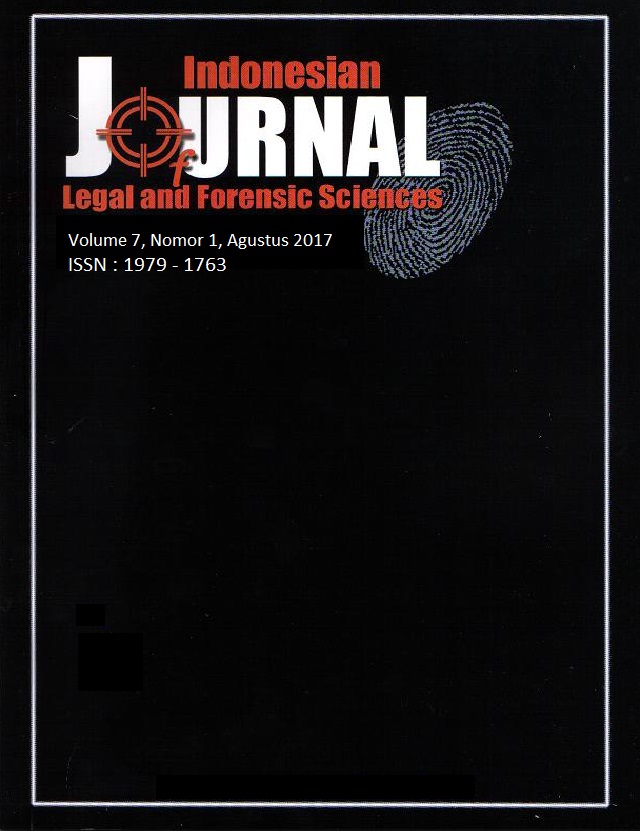ANALISIS DNA MITOKONDRIA SWAB EARPHONE SEBAGAI BAHAN ALTERNATIF PEMERIKSAAN IDENTIFIKASI
Abstract
Identification include fingerprint, property, medical, dental, serologic and exclusion methods. In the development, identification methods led to molecular forensics, a new field of science evolving since the 1980s, known as DNA fingerprinting.
Blood spots/bloods, semen spots, vaginal swabs, buccal swabs and bones are specimens widely used in DNA assay for identification. In addition to these specimens, the last objects often used by the perpetrators/victims can be used, such as hearing aids (headsets/earphones). In its use, earphones are attached to the outer ear skin; thus, the earwax is suspected to adhere to the device. To date, in Indonesia personal identification is performed through swabs of earphones/headsets using the DNA profiling method. In particular, mitochondrial DNA has not been widely used for identification.
The present study was of laboratory experimental. Earphones which have been used for 3 days were placed in room temperature for 1, 7, 14 and 20 days.
Results showed that the environmental factor of exposure duration had an effect of a significant decrease in the levels of DNA from day 1 to day 20. Only 126-bp mtDNA (HVS II) was detected on the samples of day 1 and continued with sequencing. Mitochondrial DNA has better durability and relatively higher number of copies than those of nuclear DNA. This leads to greater possibility of success in amplification, given the higher number of mitochondrial DNA copies and the fact that mitochondrial DNA is a single locus that allows recombination.



















